MoCA Introduces UDAN 5.1 To Bolster Connectivity Through Helicopters In Remote Areas
Radhika Bansal
25 May 2023
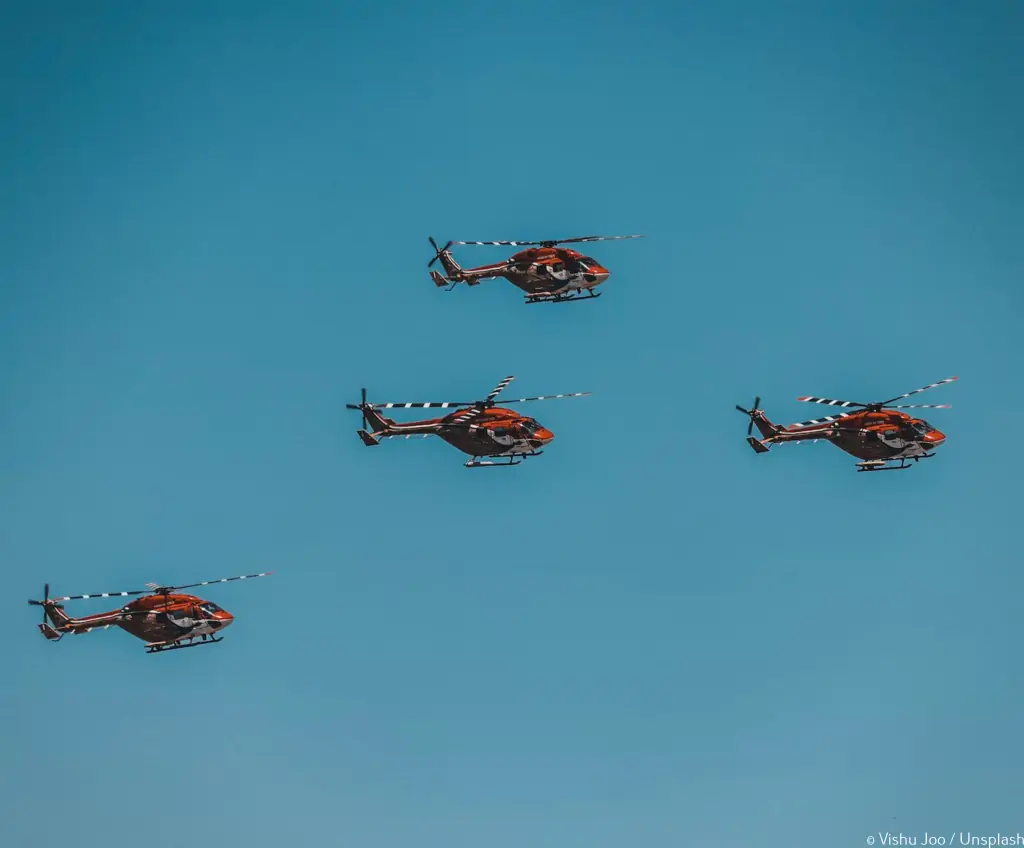
In a bid to bolster connectivity and ensure seamless access to remote areas across the nation, the Ministry of Civil Aviation, on May 24, unveiled UDAN (Ude Desh Ka Aam Nagrik) 5.1. Building upon the success of the Regional Connectivity Scheme (RCS)- UDAN through four previous rounds, and with the ongoing implementation of the fifth round (version 5.0), the latest initiative takes a stride forward by incorporating helicopters to achieve last-mile connectivity.
According to an official statement, for the first time under RCS-UDAN, this round is designed specifically for helicopter routes. UDAN 5.1 introduces several notable features to enhance connectivity and accessibility across the country.
One key update is the expanded operational scope for operators, allowing routes where either the origin or destination location falls within a priority area. Previously, both points had to be in priority areas to qualify.
Additionally, the scheme has reduced airfare caps by up to 25% to make helicopter travel more affordable for passengers. Moreover, the Viability Gap Funding (VGF) caps for operators utilising single and twin-engine helicopters have been significantly increased. Viability Gap Funding (VGF) caps (subsidy) for the operators have been improved “substantially” for both single and twin-engine helicopters to enhance financial viability for operating the awarded routes.
These adjustments are designed to improve the financial viability of operating the awarded routes, encouraging more operators to participate in the scheme and contribute to better connectivity throughout the nation.
Jyotiraditya M. Scindia, Union Minister of Civil Aviation and Steel said, "The latest round of UDAN scheme is a testament to two emerging phenomena in Indian civil aviation - one, a deeper democratisation of air travel with a focus on last-mile connectivity. Second, a growing appetite for helicopters to aid tourism. Greater helicopter penetration through such efforts will help boost tourism, hospitality, and thus, our local economies."
Focus on Helicopter Operations
UDAN 5.1, developed after consultations with stakeholders including helicopter operators, aims to provide last-mile connectivity and boost the Indian civil aviation industry's helicopter segment.
The current version of the scheme has been designed after consultations with all stakeholders including helicopter operators. While the intended target is to provide last-mile connectivity, it is also projected to give the helicopter segment of the Indian civil aviation industry a much-needed boost, the release said. To date, 46 helicopter routes have been operationalised under previous rounds of the scheme, benefitting several hilly and North East states. The release further said that This round targets coverage of a much larger number of routes. At present, there are only around 280 civilian choppers in India which are used in various sectors.
Under the UDAN scheme passengers have received the benefit of air connectivity, airlines have received concessions for operating regional routes, and unserved regions have received the direct and indirect benefits of air connectivity for their economic development. The present version of the scheme will be another step towards the Prime Minister's vision of allowing the common man to travel by air at affordable fares to remote destinations of the country.
The UDAN scheme has recently been completed for five years. The scheme was initiated in October 2016 to fulfil the aspirations of the common citizen, with an enhanced aviation infrastructure and air connectivity in tier II and tier III cities.
The government has approved the ‘Revival of unserved and under-served airports’ scheme for the revival and development of 100 unserved and under-served airports, helipads and water aerodromes by 2024. It is an ongoing scheme where bidding rounds are conducted occasionally to cover more destinations or stations and routes.
Read next
The delivery of the first Airbus A300B2 to Lufthansa in 1976 was a watershed moment in European civil aviation, laying the groundwork for a solid collaboration. It marked the beginning of a collaborative journey centered on technological advances, fleet modernization, and enhanced air travel experiences. The subsequent supply of almost ten distinct Airbus aircraft models to practically every Lufthansa Group air operator has strengthened the bond between these two industry titans.
Present Situation
Over the years, the aviation sector has experienced incredible breakthroughs and collaborations. One such alliance, formed on February 9, 1976, between Lufthansa and Airbus, has prospered and persevered for over five decades. The arrival of Lufthansa's first Airbus A300B2 marked the beginning of this strong cooperation, laying the groundwork for an extraordinary adventure in European civil aviation. This cooperation reached a watershed point today, as the 600th Airbus aircraft, an A321neo, was formally handed over to Lufthansa in a prestigious ceremony at Airbus' Hamburg-Finkenwerder facility.
Collaboration and Expansion
With the arrival of new Airbus aircraft types since that first delivery, Lufthansa's fleet has seen a remarkable makeover. Lufthansa and Airbus' relationship has permitted fleet growth, modernization, and the adoption of cutting-edge technology. Lufthansa has been able to provide its passengers with enhanced comfort, fuel efficiency, and environmental sustainability as a result of this collaboration.
The Significant Achievement
The transfer of the 600th Airbus aircraft, an A321neo bearing the registration D-AIEQ, to Lufthansa is a time of tremendous pleasure and celebration for the company. This achievement demonstrates the partnership's tenacity and mutual trust between the two firms. The ceremonial event, held at Airbus' Hamburg-Finkenwerder facility, was attended by important executives from both Lufthansa and Airbus, highlighting the significance of this accomplishment. The A321neo, which seats 215 passengers, is a state-of-the-art and fuel-efficient short- and medium-haul twinjet that has been in service with Lufthansa since 2019. D-AIEQ has the appellation 'Münster' after the German city.
The Implications for European Civil Aviation
Lufthansa and Airbus' collaboration has had a significant influence on European civil aviation. Airbus has contributed to greater connectivity, expanded capacity, and improved travel experiences for passengers by offering sophisticated aircraft solutions to Lufthansa and its subsidiaries. Lufthansa has been able to extend its route network, improve its market position, and cover a varied variety of destinations thanks to the use of contemporary aircraft.
Conclusion
The delivery of the 600th Airbus aircraft to Lufthansa represents a significant milestone in the two industry leaders' long-time collaboration. Lufthansa's relationship with Airbus has been marked by technical developments, creativity, and a shared dedication to quality, from the first Airbus A300B2 to the most recent Airbus A321neo. This accomplishment strengthens the link between Lufthansa and Airbus and lays the road for future success.
With Inputs from Lufthansa Group
Read next
The Xinjiang Airport Group and Chengdu Airlines have played important roles in the development of China's aviation sector. Their partnership in commencing ARJ21 operations in Xinjiang is a significant step forward for both entities and the region as a whole.
Present Situation
Chengdu Airlines is preparing to launch ARJ21 operations in the Xinjiang Uygur Autonomous Region, according to the Xinjiang Airport Group's official WeChat account. This historic accomplishment represents the first time a Chinese-made aircraft will operate commercially in China's north western border province.
The ARJ21 Aircraft
The ARJ21, or Advanced Regional Jet for the Twenty-First Century, is a regional aircraft developed by China's Commercial Aircraft Corporation (COMAC). This innovative aircraft has cutting-edge features and specifications that comply with international standards. Its successful commercial operation in Xinjiang is critical for China's aviation manufacturing sector since it demonstrates the company's capacity to compete with major international aircraft manufacturers.
ARJ21 Operations Expansion
Chengdu Airlines' decision to expand ARJ21 operations to the Xinjiang Uygur Autonomous Region is a strategic move. This region, famed for its cultural variety and stunning scenery, has enormous tourist potential. The extension will benefit not just tourism but also regional development and economic progress by connecting Xinjiang with other important cities in China.
Xinjiang Uygur Autonomous Region
The Xinjiang Uygur Autonomous Region, located in northwest China, is strategically important in terms of connectivity and trade. It is a culturally varied region with a rich history that provides a variety of tourist attractions. The launch of ARJ21 operations will provide more convenient and efficient air travel choices, boosting tourist and economic activity in the region.
Impact on China's Aviation Industry
The start of ARJ21 operations in Xinjiang is a significant milestone for China's aircraft manufacturing industry. It showcases the country's capacity to manufacture modern aeroplanes and compete globally. China enhances its position in the international aviation sector by boosting local operations and reducing its dependency on foreign aircraft makers.
Passenger Benefits and Experience
Passengers will greatly profit from the launch of ARJ21 operations in Xinjiang. Travelers will have more convenient and economical air travel alternatives inside and outside the area as connectivity improves. This would improve access to local and foreign sites, promote tourism growth, and streamline commercial operations.
Prospects and Challenges for the Future
The successful launch of ARJ21 operations in Xinjiang opens up the possibility of expanding operations to additional regions of China. The aircraft's excellent reception and performance in Xinjiang will be critical in evaluating future expansion plans. To achieve a smooth and sustainable expansion, difficulties such as logistical complications and responding to changing regional demands must be addressed.
Conclusion
The launch of ARJ21 operations in the Xinjiang Uygur Autonomous Region represents a significant achievement for Chengdu Airlines, the Xinjiang Airport Group, and the Chinese aviation sector as a whole. This step not only highlights the capability of Chinese-made aircraft, but it also encourages regional development, connectivity, and tourism. With its successful deployment, ARJ21 activities in other areas of China are expected to expand in the future.
Read next
Textron Aviation has long been recognized as an industry leader, manufacturing high-quality and innovative aircraft. One such addition to their remarkable inventory is the Cessna SkyCourier. Textron Aviation's recent delivery of the first passenger unit strengthens its position as a significant participant in the turboprop industry, delivering cutting-edge solutions for a variety of aviation demands.
Current Situation
Textron Aviation, an established aircraft manufacturer, recently announced the delivery of the first passenger unit of their latest twin-engine, large-utility turboprop, the Cessna SkyCourier. This landmark accomplishment represents a significant leap in aviation technology and expands air travel alternatives to the lovely Hawaiian Islands. Western Aircraft, Inc., operating as L?na'i Air, a luxury flight service linking Oahu to the enchanting island of L?na'i, is the recipient of this innovative aircraft.
L?na'i Air: Hawaii's Luxury Air Service
L?na'i Air is a premier luxury air service that caters to discerning travelers looking for an unforgettable experience between Oahu and L?na’i. With the addition of the Cessna SkyCourier to its fleet, L?na'i Air strives to improve the benchmark for air travel by providing a blend of opulence, convenience, and spectacular views throughout the short journey.
The Cessna SkyCourier: A Revolutionary Turboprop
The Cessna SkyCourier represents a paradigm shift in the realm of turboprop aircraft. This twin-engine aircraft, designed for versatility and utility, provides unrivalled performance and dependability. Its spacious cabin can comfortably accommodate up to 19 passengers, making it an excellent choice for regional flights. The payload capacity of the Cessna SkyCourier enables efficient transportation of both passengers and goods, opening up new opportunities for a variety of sectors.
The Partnership between Textron Aviation and Western Aircraft, Inc.
Textron Aviation and Western Aircraft, Inc.'s partnership marks a significant step forward in the aviation industry. Western Aircraft, Inc. exhibits their dedication to offering outstanding air travel experiences to customers by selecting the Cessna SkyCourier as the flagship aircraft for L?na'i Air. The collaboration combines Textron Aviation's engineering competence with Western Aircraft, Inc.'s vast understanding of the Hawaiian market, resulting in a synergy that benefits both firms and their customers.
Conclusion
The delivery of the first passenger unit of the Cessna SkyCourier to Western Aircraft, Inc., operating as L?na'i Air, by Textron Aviation is a noteworthy milestone in the aviation industry. This milestone not only demonstrates the technological breakthroughs in turboprop aircraft, but it also introduces a new level of luxury air travel to the lovely island of L?na'i. Passengers may expect a phenomenal travel experience between Oahu and L?na'i considering the exceptional capabilities of the Cessna SkyCourier and the expertise of both Textron Aviation and Western Aircraft, Inc.
With Inputs from Textron Aviation
Read next
On-Time performance is critical for airlines in the fast-paced world of aviation. Passengers rely on airlines to adhere to their schedules, ensuring a seamless travel experience. Delays and interruptions can cause annoyance, missed connections, and an unfavorable opinion of the reliability of an airline. Cirium, a prominent aviation analytics firm, compiles and publishes its On-Time Performance Monthly Report to monitor and assess airline punctuality globally.
Overview of Cirium’s Report
The aviation industry eagerly awaits the publication of Cirium's On-Time Performance Monthly Report, a comprehensive analysis of flight data collected from airlines worldwide, every month. This report provides essential data regarding airline punctuality, assisting professionals and travelers alike to make informed assessments. Cirium provides a thorough perspective of on-time performance across various regions by segmenting the data by geographical location.
Iberia: The Most Punctual Airline in the World
Based on the latest edition of Cirium's report, Iberia is the world's most punctual airline, with an on-time performance of 87.28% in April. Based on statistics from 99.62% of Iberia's monthly operations, or 13,929 flights, this result was obtained. This achievement demonstrates Iberia's dedication to operational efficiency and providing a dependable travel experience to its passengers.
Analysis of Iberia's On-Time Performance
Iberia's remarkable on-time performance not only secured the airline's status as the most punctual in the world but also demonstrated its consistency in meeting scheduled departure and arrival times. Iberia implements a variety of techniques and practices that prioritize punctuality in order to sustain such a high level of performance.
Airline | Ranking | On-time arrival | Total Flights | Tracked flights |
Iberia | 1 | 87.28% | 13,929 | 99.62% |
Avianca | 2 | 86.83% | 17,198 | 99.43% |
LATAM | 3 | 85.80% | 40,595 | 98.52% |
Qatar Airways | 4 | 84.26% | 13,556 | 98.11% |
Japan Airlines | 5 | 83.95% | 25,416 | 99.98% |
Delta Air Lines | 6 | 83.29% | 135,336 | 99.94% |
ANA | 7 | 82.49% | 24,650 | 99.76% |
Emirates | 8 | 81.43% | 13,357 | 99.87% |
KLM | 9 | 79.10% | 19,866 | 99.69% |
American Airlines | 10 | 78.95% | 163,838 | 98.90% |
The Vitality of On-Time Performance
On-Time performance is more than a statistic; it influences every aspect of the customer experience and an airline's reputation. Punctuality is typically a decisive factor for travelers when considering an airline. Airlines with an excellent track record of on-time performance are viewed as trustworthy and reliable, drawing additional customers.
Improving On-Time Performance Strategies
Maintaining a high level of on-time efficiency requires airlines to work together. Airlines employ a variety of tactics and best practices to enhance their punctuality. Flight planning and scheduling are critical, guaranteeing appropriate buffer hours between flights and accounting for unexpected delays.
Limitations and Challenges
While airlines strive for punctuality, a variety of issues and limitations can have an influence on their on-time performance. External variables such as weather, air traffic congestion, and security procedures are beyond an airline's control but may exert a substantial impact on flight schedules. Unexpected events such as breakdowns in equipment or runway closures can also cause delays.
Future Innovations and Trends
Technological improvements in the aviation industry provide novel opportunities to improve on-time performance. To optimize flight schedules, predictive analytics and machine learning algorithms can analyze preceding data and identify patterns. Airlines can maximize punctuality by employing these technologies to make educated decisions concerning routes, schedules, and resource allocation.
Conclusion
On-time performance remains a vital component of the aviation sector, influencing customer satisfaction, airline reputation, and overall travel experiences. Cirium's On-Time Performance Monthly Report serves as an invaluable tool that provides thorough insights on airline punctuality throughout the world.
Read next
The ePlane Company, a leading developer of Electric Vertical Takeoff and Landing (eVTOL) aircraft, announced that it has received Design Organisation Approval (DOA) from the Directorate General of Civil Aviation (DGCA) on Monday, May 22, 2023. The DOA is a crucial first step in the aircraft certification process, and it paves the way for ePlane to begin commercial production of its e200 eVTOL two-seater aircraft designed to operate in urban spaces. This approval marks a significant milestone for the company's aim to achieve commercialization by 2025.
The distinguished guests present at the ceremony included Vikram Dev Dutt, Director General of the Directorate of Civil Aviation (DGCA); Prof V Kamakoti, Director of IIT Madras; Indranil Chakraborthy, Deputy Director General of DGCA; Ms Meenu Kapil, Director, Aircraft Engineering; and Jai Simha, Director, DGCA Chennai. The ePlane Company hosted the dignitaries from the Directorate General of Civil Aviation (DGCA) and IIT Madras at a special ceremony to announce the awarding of the certificate.
On the occasion, the DGCA dignitaries and Prof V Kamakoti, the Director of IIT Madras, presented the Design Organisation Approval to Prof Satya and the ePlane team. The DGCA team also visited the National Centre for Combustion Research and Development (NCCRD) at the IIT Madras Campus to gain insights into ePlane's ongoing work and progress. Subsequently, they toured the ePlane manufacturing facility followed by the Director General’s address and a small celebration to mark the occasion at the IITM Discovery Campus in Thaiyur, near Chennai.
“We are delighted to receive the DOA certificate from the DGCA,” Prof. Satyanarayanan Chakravarthy, Founder and CEO, The ePlane Company, said. “This is a major milestone for our company. It is a crucial first step in the aircraft certification process and paves another stone on the path towards the commercialisation of our e200 eVTOL aircraft. It gives us immense pleasure to announce that ePlane is the first startup in India to be approved as a Design Organisation and one of the very few private entities for complete aircraft design. The certification brings us a step closer towards our mission to ensure safe passenger flights in India and the world. We are grateful for the support of DGCA and IIT Madras in helping us to achieve this milestone.”
Vikram Dev Dutt, Director General, DGCA, conveyed his enthusiasm about visiting The ePlane Company’s facility and personally presenting the Design Organisation Approval. He said, "We are thrilled to witness the rapid growth and vast potential of the UAV and eVTOL ecosystem in India. ePlane has demonstrated a remarkable commitment to meeting stringent aircraft certification norms, reflecting their exceptional calibre and innovative approach. I extend my heartfelt congratulations to the entire ePlane team on achieving this significant milestone, and I am confident in the future success of ePlane and its remarkable e200 aircraft."
Prof Kamakoti, Director, of IIT Madras said, “I am delighted to be a part of this historic moment and I commend the nurturing ecosystem at IIT Madras, which supports both educational initiatives and startup incubation.”
About ePlane & e200
The ePlane Company received Design Organisation Approval for its ePlane e200 aircraft from the DGCA, which is a crucial, initial step in the aircraft certification process. After this, the start-up will be working towards obtaining type certification for the aircraft.
The ePlane e200 is a two-seater aircraft specifically designed for urban spaces. It boasts a travel range of 200 km and can make multiple stops on a single charge, resulting in significant time savings for consumers, as stated in a release by the start-up. An eVTOL aircraft utilises electric power for vertical take-off, hovering, and landing. In May, the company conducted a successful test of its prototype aircraft, the ePlane e50.
Incubated at IIT Madras and founded in 2019 by Satyanaryanan Chakravarthy, who is also a professor at the institute, the start-up is currently seeking Series A funding. In 2022, it secured $5 million in seed funding.
The DOA serves as a crucial initial step for the ePlane Company, signifying its capabilities to meet the stringent standards set by the Indian Ministry of Civil Aviation, allowing the company's flying electric taxis to take to the skies. With the DOA Certificate in hand, ePlane is poised to continue its ground-breaking work in developing safe, efficient, and environmentally friendly aircraft for the future.


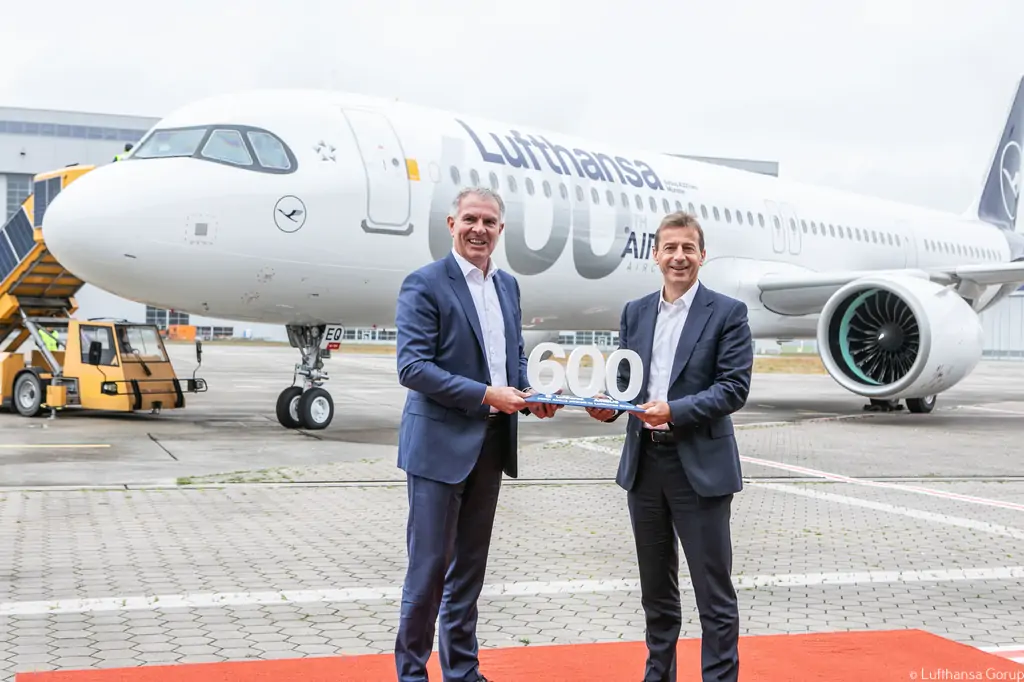
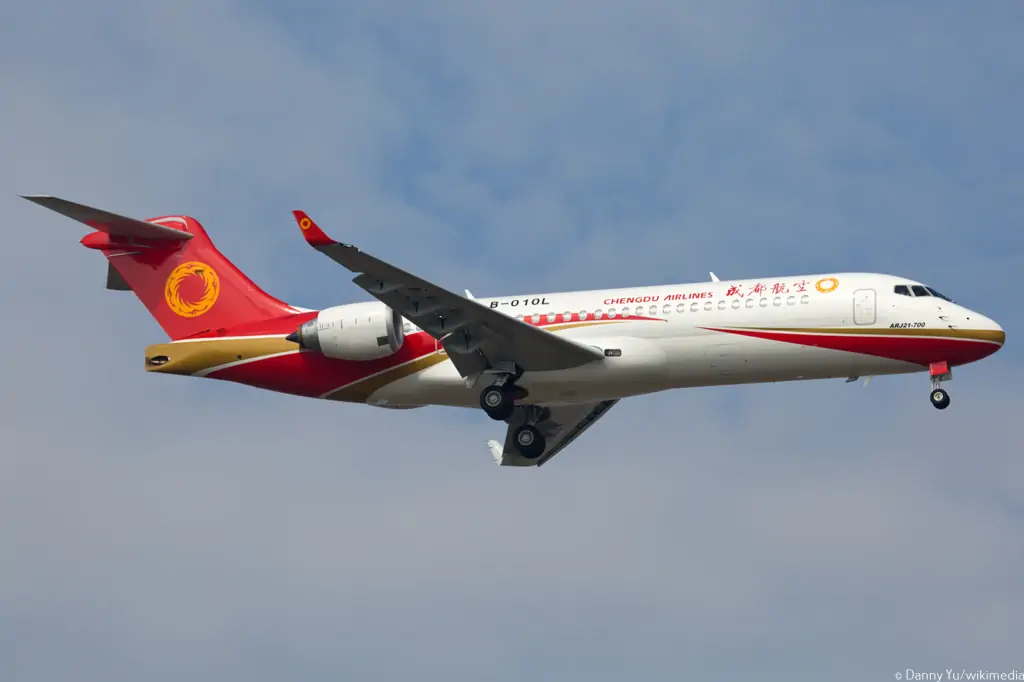
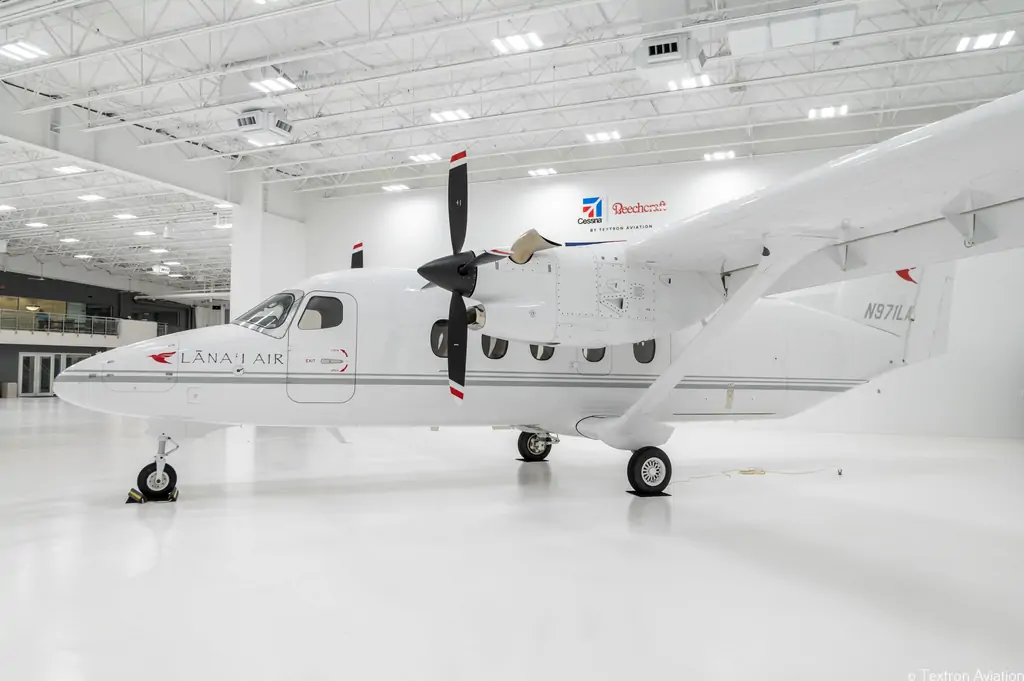

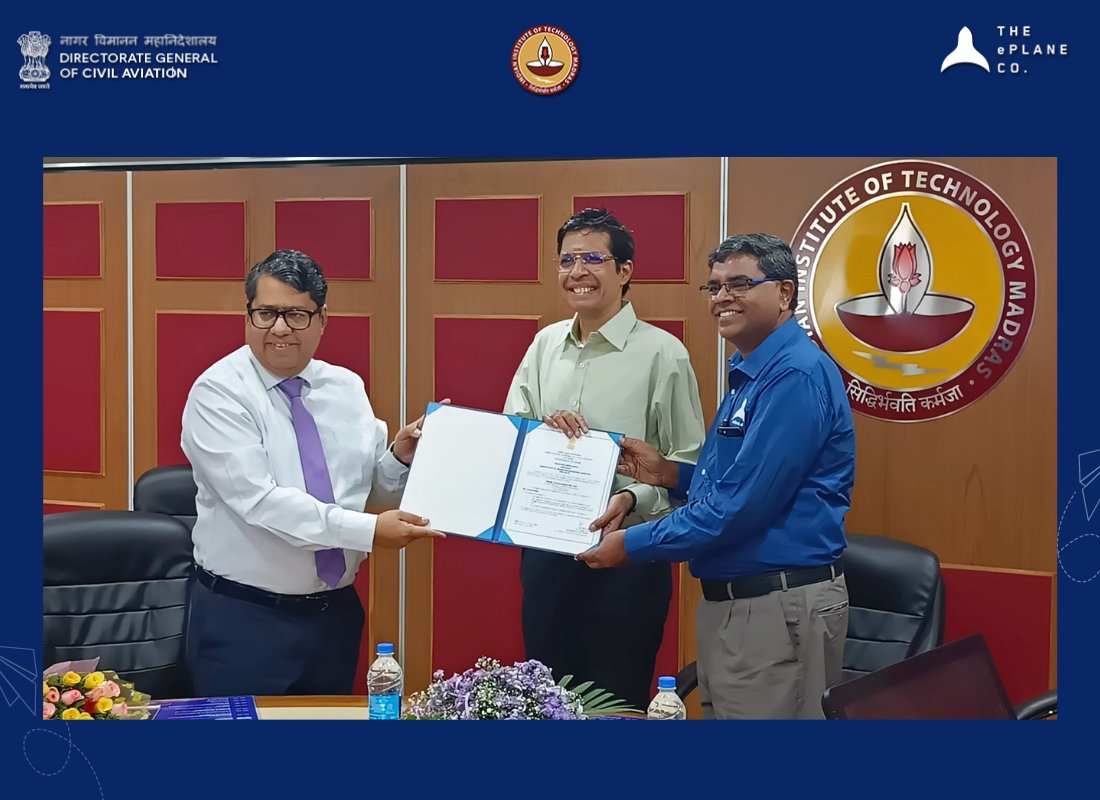
Comment